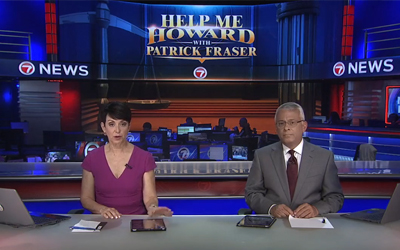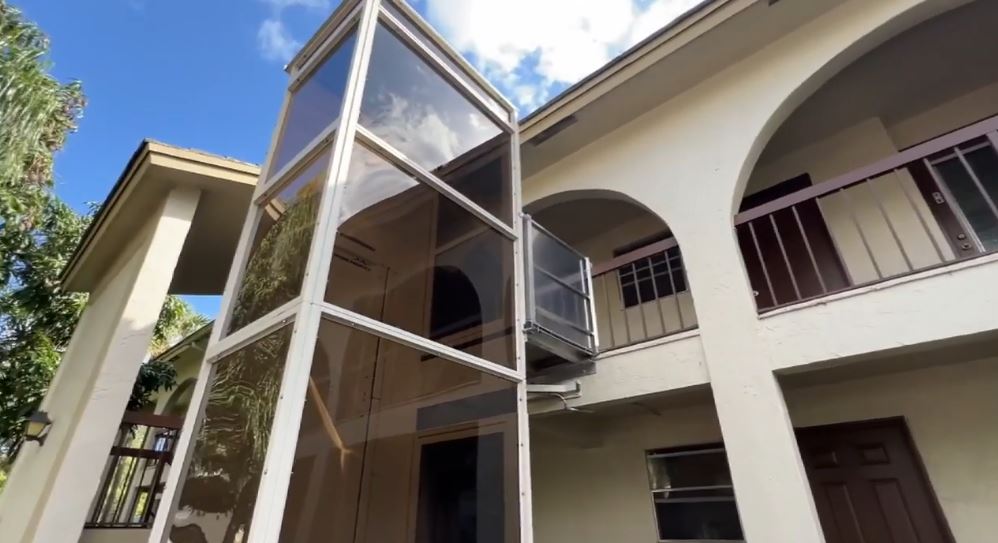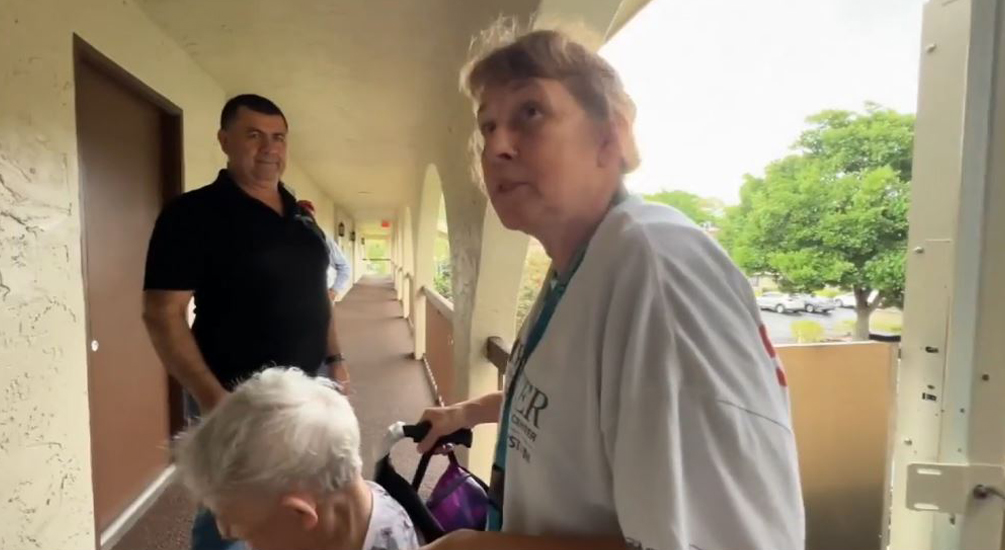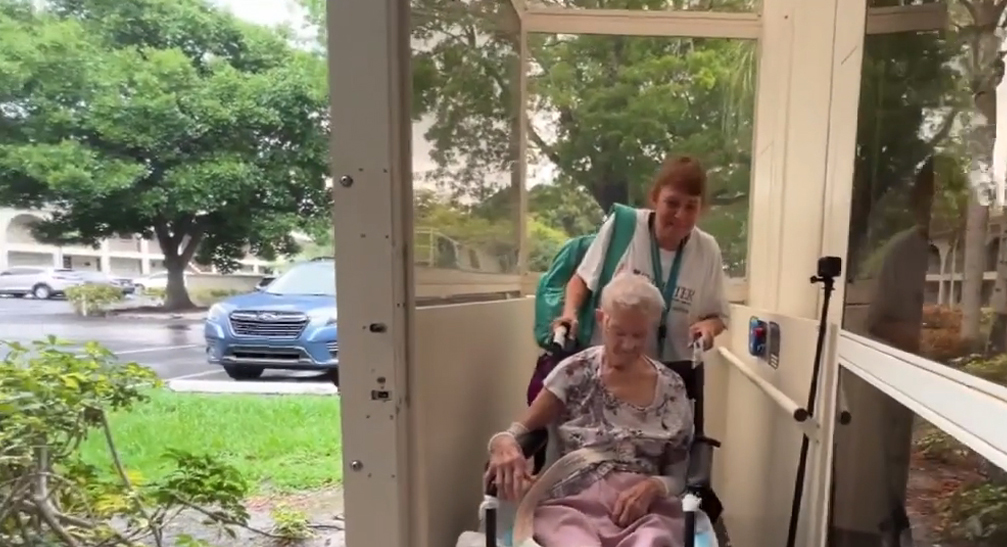Featured on WSVN Channel 7’s Help Me Howard
In one South Florida apartment building, a lack of vertical platform lift (VPL) maintenance didn’t just create an inconvenience—it trapped a woman in her home and delayed critical cancer treatments for more than six months.
Carolyn Blankenship, who had suffered multiple strokes and could no longer walk, relied on a residential vertical platform lift to leave her second-floor apartment.
But for over four years, the lift was unreliable. And for the last six months, it was completely unusable.
She was trapped.
When Carolyn was diagnosed with cancer, her daughter Diane faced an impossible challenge: there was no safe way to get her mother to medical treatment. Fire rescue couldn’t help every time. Hiring private medical transport was prohibitively expensive—especially for a full-time caregiver without income.
Carolyn missed six months of treatment. She deteriorated.
“We are prisoners in our own home.”
Diane documented every breakdown. Called 911. Filed complaints. Pleaded with the Wynmoor building association to fix the VPL.
Nothing changed. Even after Broward County issued $8,250 in fines, the lift still didn’t work.
That’s when Diane contacted WSVN Channel 7’s Help Me Howard.
▶️ Watch the full Help Me Howard segment
The story aired. And finally, help arrived.
Clark Elevator Was Called In—And Got the Lift Running in Days
Clark Elevator wasn’t the company that installed the original VPL. But after the news aired, we were contacted and immediately sent a technician to assess the situation.
Our team didn’t just inspect the unit—we took decisive action.
We removed the broken platform lift, installed a new, modern system, and coordinated directly with local officials to ensure everything was safe, legal, and fully inspected.
One detail remained: the emergency phone line wasn’t yet connected.
Because a licensed Clark Elevator mechanic was on-site, the VPL met Florida requirements for legal operation—even without the emergency phone line fully installed.
So we assisted Carolyn down the lift for the first time in months. She finally made it to her doctor’s appointment.
“My mother is very happy. She can get her cancer taken care of.”
Everything changed from that moment on.
Carolyn finally began the cancer treatment that had been delayed for half a year. And Diane was freed from the crushing burden of isolation and helplessness.
This wasn’t just a repair. It was a turning point.
Behind the Scenes: What Clark Elevator Did
Here’s what our team handled, start to finish:
- Full removal of the broken vertical platform lift
- Installation of a new, fully compliant VPL system
- On-site supervision by a licensed elevator mechanic
- Coordination with local officials for final inspection and legal operation
- Communication with the association and authorities to resolve hold-ups
One Working Lift Changed Everything
Carolyn didn’t need convenience—she needed freedom.
Diane didn’t need empty promises—she needed real solutions.
Clark Elevator delivered.
VPL maintenance isn’t a checkbox. When a lift is someone’s only way to access the world, it’s not a luxury—it’s a lifeline.
A Word from Richard Clark
Richard Clark, owner of Clark Elevator, shared his thoughts:
“No one told us about Carolyn before the story aired. But once we understood the situation, we made it a priority. Sometimes the job is about more than hardware—it’s about doing the right thing.”
You can connect with Richard directly on LinkedIn.
Don’t Wait Until It’s a Headline
If someone in your building depends on a vertical platform lift, don’t wait for the next crisis.
Whether you’re a property manager, HOA board member, or tenant with an aging lift system—Clark Elevator is here to help.
📞 Reach out today to schedule an inspection, request a repair, or discuss a full VPL replacement.
We fix lifts that people rely on. And we act before it’s too late.





